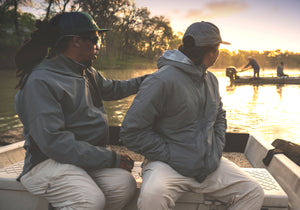Embarking on the captivating journey of fly fishing, you're undoubtedly aware that your performance hinges on more than just the quality of your fly rod. The fly line, although often overlooked, plays an instrumental role in this tradition-rich sport, influencing a range of factors, from casting to line control, and ultimately your success in luring your catch. Understanding how to select the best fly line for your unique needs is a pivotal aspect of optimising your fly fishing experience.

What Are the Various Types of Fly Lines and Their Uses?
Before you can make an informed choice regarding the best fly fishing line for your specific needs, it's crucial to understand the distinct types available and their dedicated uses. Generally, fly lines are grouped into three main categories: floating, sinking, and sink-tip lines. Each category offers a unique set of characteristics to cater to the varied needs of anglers.
Floating Fly Lines
Floating fly lines, as implied by the name, float on the water's surface. They're exceptionally versatile and designed for a multitude of fly fishing techniques such as dry fly fishing, nymphing, and streamer fishing in shallow waters. Orvis provides an assortment of floating fly lines, thoughtfully crafted with varying tapers and lengths, ensuring there's an ideal match for every situation.
Sinking Fly Lines
For anglers who desire to explore the depths, sinking fly lines are the perfect tool. They're ideal for deep water nymphing or fishing with streamers in deep lakes or fast-flowing rivers. The rate at which these lines sink can vary significantly, so choosing the right one is dependant on the depth and current of the water you're planning to fish.
Sink-tip Fly Lines
A hybrid of the two, sink-tip lines bring together the benefits of both types. They're uniquely designed with a section that sinks while the remainder of the line floats. This design is particularly beneficial for streamer fishing in medium-depth waters, giving the angler superior control over the fly and allowing it to remain within the strike zone for a longer period.
Selecting the Best Fly Line to Match Your Fly Rod and Fishing Plan
The process of choosing the best fly line represents a delicate balance between your fishing environment, the type of fly rod you're using, and the kind of fishing you aim to do. Here are some essential points to consider:
Matching Line Weight with Rod
Every fly rod is engineered to perform best with a specific fly line weight. This weight refers not to the actual heaviness of the line, but to its thickness and stiffness. Ensuring the correct line weight is critical for achieving the desired rod flex and optimising casting efficiency. If you're uncertain, it's best to refer to the manufacturer's guidelines or seek advice from seasoned anglers.
Choosing the Line Taper
The taper of your fly line is a significant factor influencing casting. The three main types – weight forward, double taper, and level – each have their distinct advantages. Weight forward tapers are widely favoured due to their versatility, rendering them suitable for most fishing scenarios. Double tapers excel at enabling precise casts at moderate distances.
Consider the Fishing Conditions
Your fishing environment, encompassing the weather, water type, and target species, also dictates your choice of fly line. For instance, coldwater lines are designed to maintain their flexibility in cooler conditions, while tropical lines resist softening in hot climates. Also, give thought to the species you're targeting: larger, more combative fish may necessitate a line with a stronger core.
Line Colour and Visibility
The colour of your fly line may seem inconsequential, but it can impact your fishing experience significantly. Brightly coloured lines are highly visible and assist in detecting subtle strikes. Conversely, a more subdued line colour might be more advantageous in clear waters where fish are easily startled.
In summary, selecting the best fly line is not a one-size-fits-all scenario. It requires a thoughtful evaluation of the type of fishing you plan to undertake, the conditions you'll encounter, and how well the line complements your rod. Always remember, the best fly fishing line is the one that amplifies your control, enhances your casting, and ultimately, maximises your odds of securing that gratifying catch. Dive into Orvis's extensive selection of fly lines today, and let us simplify your selection process. Armed with the right knowledge and equipment, the vast expanse of your fly fishing adventures awaits you.

